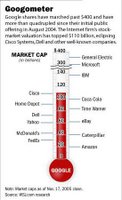
I have mentioned diversification before. You may not believe me if I told you that Berkshire has 90% of its equity holdings in its top 10 positions. Sequoia has 80% in its top 10. Other examples of concentrated funds include the Fairholme Fund. These and other outstanding investors have achieved stellar results by eschewing diversification as defined by many financial advisors trying to sell index funds to the unsuspecting investor. Instead, they maintain that the best way to minimize risk is to THINK. Invest in those companies you understand best and be selective. I recently finished reading a highly recommended book by Joel Greenblattt, You Can Be A Stock Market Genius. With regards to diversification he cites statistics which he summarizes as follows:
- After purchasing 6 or eight stocks in different industries, the benefit of adding even more stocks to your portfolio in an effort to decrease risk is small, and
- Overall market risk will not be eliminated merely by adding stocks to your portfolio
Limit the number of your holdings to 25 or 30 holdings and you should be just fine.
By the way, Greenblattt’s book is a must read. Remember my recent blog about spin-offs? Well, he has a whole chapter on spin-offs and why they represent great investment opportunities. For a recent spin-off opportunity, you may want to check out Chaparral Steel Company (Nasdaq: CHAP). Talk about a company with an amazing culture. Greenbalt’s case studies are simple to follow and very educational. You will also learn all about risk arbitrage (he doesn’t like this strategy), merger securities, bankruptcies and LEAPS. Perhaps then you can replicate Greenblatt’s Gotham Capital’s 50% annual return . Not bad.





